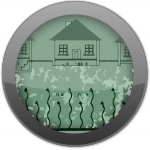Indoor Vapor Intrusion – Chemical

What You Need to Know
Vapor intrusion is the process by which chemicals in soil or groundwater migrate to indoor air above or near (within a 100’ or even greater) a contaminated site
Adverse health effects based upon length, amount, frequency or exposure as well as toxicity of chemical and sensitivity of affected parties
Entrance occurs thru building cracks and closed, tight buildings increase effects
Most reliable sampling methodology-soil gas samples under building foundation
Common sources- gas stations, dry cleaners, body shops, metal works, landfills, industrial sites,etc.
What You Need to Do
Review the most current EPA technical guidelines, ASTM, ITRC (Interstate Technology & Regulatory Council) guidelines and any state requirements for vapor intrusion
Consider all potential vapor intrusion pathways as per technical guidelines
Mitigation can consist of active soil depressurization, passive soil ventilation, positive indoor pressurization, increasing indoor ventilation, sealing cracks/openings in foundation, and installing passive barriers
Operations and maintenance of vapor intrusion mitigation systems usually entail periodic follow up inspections (yearly) with the state and EPA also performing validation inspections
Myths and Misconceptions
If I had a Phase 1 Environmental Site Assessment (ESA) performed several years ago, I do not have to worry about a vapor intrusion issue-FALSE
As long as there are no discernible odors on the property, there can be no vapor intrusion-FALSE
We have a No Further Action (NFA) letter on our site and the site has been closed, therefore vapor intrusion cannot be an issue-FALSE
Indoor air sampling for vapor intrusion can be problematic and must be carefully evaluated or results may indicate false positives/negatives-TRUE
Expert Services:
Insurance
Claims: Prevention and Response
- Site Investigations/Inspections
- Loss Mitigation Protocol Development
- Creative Scope of Work Development
- Project Oversight
- Environmental Sampling
- Cause and Origin Investigation
- Emergency Response
- Client Interface
- Communication/Alert Development
- Liability Exposure Minimization
- Expert Consultation
Underwriting: New Product Development and Risk Assessment
- New and Emerging Risk Education-Focus on New Areas of Coverage Opportunity
- New and Emerging Product/Technology Applicability to Underwriting Coverage
- Recommendations for Coverage Expansion Based on Risk Minimization Strategies
- Policy Language Review/Development Based on Industry Specific Issues
Due Diligence: Investigation, Auditing, Verification and Risk Assessment
- Project Oversight Ensuring Compliance with Policy Coverage
- Immediate Communication re Project Issues Impacting Policies
- Detailed Reports of Project Findings/Oversight with Recommendations
- Cost Estimate Development Based on Construction/Remediation Options
- Phone Surveys/Desktop Reviews Focusing on Issues of Potential Concern
Remediation Cost Auditing and Risk Quantification
- Review/Audit of Contractor Invoices
- Scope of Work Performed Analysis (Best Practices, Regulatory Compliance)
Expert Testimony
- Environmental Risk
- Healthcare Risk
Education and Training: Claims and Underwriting
- Seminars/Webinars on Environmental/Healthcare Issues Focusing on Claims/Underwriting Risk
- Seminars/Webinars on Emerging Issues and Policy Impact as well as Coverage Expansion Opportunities
- White Paper Development
Insurance Toolkits: Claims and Underwriting
- Development of Underwriting Applications for Healthcare/Environmental Risk
- Development of Value Added Risk Management Checklists/Protocols for Insureds
- Operations and Maintenance Programs for Water Intrusion Risk Management, Asbestos, Lead Based Paint
- Hazard Assessment Critical Control Point Programs (HACCP)
Insurance Risk Alert Service
- Development of Insured Alert Communications re Emergency Healthcare/Environmental Risk
- Development of Employee Alert Communications re Emergency Healthcare/Environmental Risk

